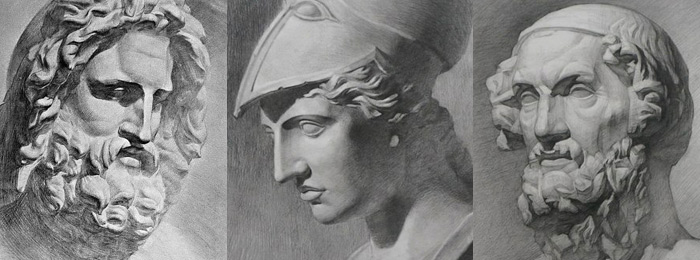Hi Vladimir,
I have been working with portrait drawing. I can end up with a decent drawing, but I am having a very difficult time with measuring the proportions at the beginning. I follow the steps and the basic 1/2, 1/3 measurements, etc., as outlined and shown in the Drawing Academy videos, but somewhere along the way, something goes awry.
I seem to get lost in the process, and proportions get a bit off. One eye might be farther over than it should be, or the side of the head on a slightly turned head isn’t wide enough, etc. I took me about two hours for a head size of about five inches. It’s rather frustrating.
How can I measure out a model’s features and proportions more accurately and with greater ease?
What can I do to make this process easier and more accurate right from the beginning?
Thanks,
Marianne
Hi Marianne,
Thank you for your question.
How to measure proportions

Measuring proportions and angles with a pencil is quite easy. The process is described in these articles:
//drawingacademy.com/how-to-measure-with-a-pencil
//drawingacademy.com/how-do-we-measure-with-a-pencil
How to draw a portrait
 How to draw a portrait using constructive drawing principles is explained step-by-step in my book:
How to draw a portrait using constructive drawing principles is explained step-by-step in my book:
https://www.amazon.com/dp/B01APXUSY4
These will give you the necessary theoretical knowledge to make well-proportioned portraits using constructive drawing principles.
This book is suitable for beginners as well as for advanced art students.
It contains 47 step-by-step illustrations that will guide you one step at a time from blank sheet of paper to the finished portrait.
Now, about practice.
Have you tracked how many hours you have actually spent drawing portraits constructively, and how many portraits you have done so far?
High quality and greater ease are products of quantity.
It takes about 1,000 hours to achieve a very good level of skills and more than 10,000 hours to become excellent in something.
You mentioned a two-hour exercise. By standards mentioned above, you haven’t even started, but you expect some good results.
After 500 portrait drawings or so, you can start thinking whether quality of your drawings meets your expectations.
Draw more, draw from life, draw obsessively. Results will follow auto-magically.
Kind regards,
Vladimir London
Drawing Academy tutor






Hi Vladimir
Thanks for the links. I do have the step by step book for the 3/4 portrait and plan to read it again and again.
I have drawn only 5 portraits in all so far, so merely a drop in the bucket for practice. The 2 hours were how much time it took just to measure out where features go before getting into the tonal rendering.
I have borrowed a plastic skull model from a cranio-sacral therapist to look at the skull relative to the position of the model. I have even traced my face from the middle to the sides to get a better sense of where the front becomes the sides, which I find helpful to do.
I may also simply need to figure out my own process through the measuring out the placement and proportions of the features.
I will keep plugging away at it!
Thanks again!
Marianne
Measure with one eye open
squint
look at your picure though a black or mirrored glass above your eyebrows